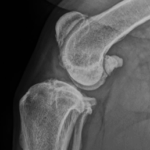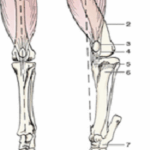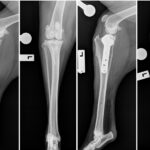
Grass Seeds
With some fine weather finally here, grass seeds are once again ready to cause problems.
During the spring and summer months, we see dozens of dogs and cats with grass seeds in ears, between toes, and even under eyelids.
Grass seeds have developed the ability to cling on to animals coats as a way of spreading further. Unfortunately, they sometimes bury themselves into the animal and cause quite severe problems.
The most common sites we see grass seeds are in ears and between the toes of dogs, though we have seen them under eyelids, up noses and in the body wall.
Grass seeds in ears:
Over spring and summer, it is safest to assume that any dog or cat with a sore ear has a grass seed in their ear. Seeds in an ear can very quickly travel down the ear canal and through the eardrum, causing a lot of pain and infection. The seed can even travel into the middle ear, requiring a difficult surgery to remove. You normally won’t be able to see a seed in a dog’s ear without special equipment, so a trip to the vet is essential if your dog has a sore ear.
Grass seeds in paws:
The “classic” sign of a grass seed in a paw is a swelling between the toes. Grass seeds will form an abscess quite quickly, which can be very painful. If treated quickly we can normally remove the seed quite easily, but left untreated the seed can continue moving up the leg. This makes it much harder to find surgically as well as leading to a longer recovery for the pet.
Grass seeds in eyes:
Any time we see a pet with a sore eye in spring and summer, we always look under the eyelids to see if a grass seed hiding. We see several cats and dogs each year with grass seeds under their eyelids. Fortunately, these are normally easy to remove with just a bit of local anaesthetic applied to the eye.
Grass seeds in noses:
If your pet has a grass seed up its nose, they will generally be constantly sneezing and may have some discharge from the nose. To remove a seed from the nose, we normally need to give a heavy sedative or anaesthetic.
What can you do to minimise the risk of a grass seed to your pet?
There is a lot you can do to minimise the risk of grass seeds causing problems for your pets.
- Clip the hair around the paws and ears short (for long haired pets consider clipping the whole dog), as this gives the seed less hair to stick to.
- Avoid walking your dog in long grass
- Check between their toes, over their body and near their ears every day as well as after every walk
- Mow or restrict access to long grass to minimise the exposure to seeds




Trackbacks/Pingbacks